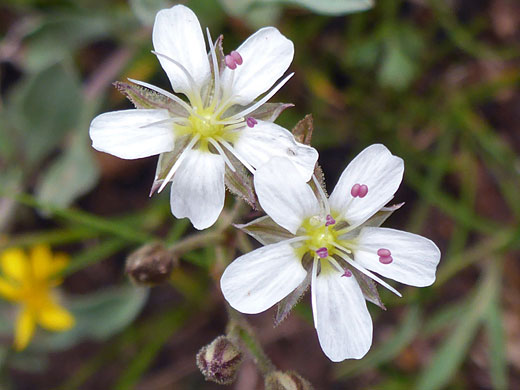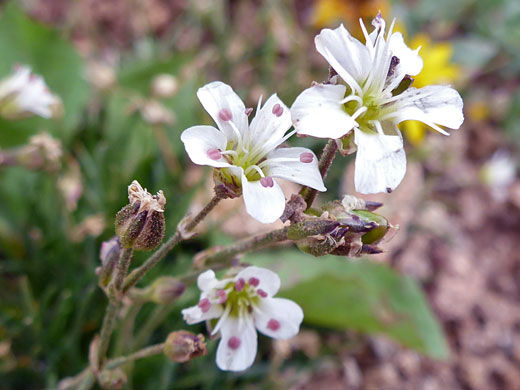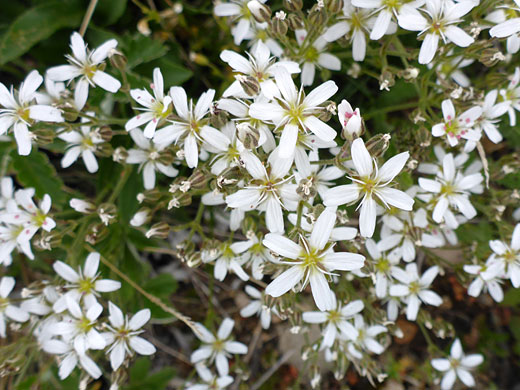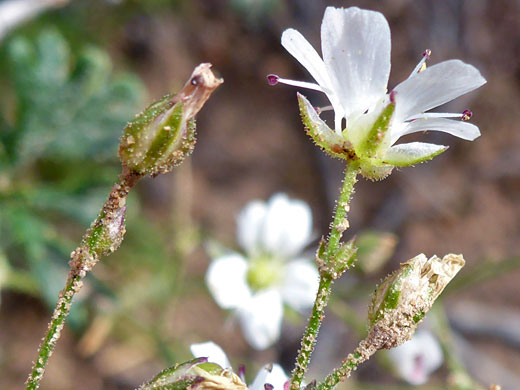
Flowers and buds of Fendler's sandwort (arenaria fendleri), along the Cerro Grande Trail in Bandelier National Monument, New Mexico
Common name:
Fendler's sandwort
Family:
Scientific name:
Eremogone fendleri
Synonym:
Arenaria fendleri
Main flower color:
Range:
The southern Rocky Mountains, plus parts of Idaho and Arizona
Height:
Between 4 and 12 inches
Habitat:
Rocky areas on mountainsides, woodland clearings, sagebrush plains, tundra; 4,000 to 14,000 feet
Leaves:
Thin, thread-like, up to 3 inches long
Season:
July to September
The thin, branched stems of eremogone fendleri bear numerous (up to 30) pretty white flowers about half an inch in diameter, consisting of five pointed green sepals beneath and between five white petals, which usually have a shallow notch at the tip. Sepals are about the same length as the petals, or slightly shorter. Relatively long, white filaments radiate from the greenish center, topped by purplish anthers. The stems and sepals have a covering of short, stalked, glandular hairs. Flowers are borne on pedicels up to one inch long, also glandular hairy.
The thin, thread-like leaves grow mostly around the base, but also along the stem, in four or more opposite pairs, usually reduced in size. Fruits are hairless, green capsules, around a quarter of an inch long. The plant is quite widespread across the southern Rocky Mountains, most commonly on cliff ledges and at the base of scree slopes.
The thin, thread-like leaves grow mostly around the base, but also along the stem, in four or more opposite pairs, usually reduced in size. Fruits are hairless, green capsules, around a quarter of an inch long. The plant is quite widespread across the southern Rocky Mountains, most commonly on cliff ledges and at the base of scree slopes.
All Contents © Copyright The American Southwest | Comments and Questions | Contribute | Site Map











